GTranslate is an online language translation service that helps people communicate in any language. It provides translation services for more than 100 languages, including Spanish, French, German, Chinese, Japanese, Hindi, and many more.
By using GTranslate's cloud-based platform, users can easily translate text or audio from one language to another in just a few seconds. It also offers an API solution to help developers quickly add multilingual support to their applications and websites.
GTranslate's advanced machine learning algorithms ensure fast and accurate translations while preserving the original context and meaning of the source text. With its easy-to-use interface and powerful features, GTranslate makes it easy to communicate with people who speak different languages around the world.
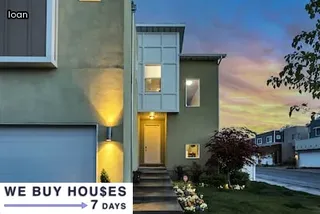
When it comes to understanding the various language assistance services available to those who are seeking financial aid for home repairs in Minnesota, the first and most important step is researching all of the options. This includes both grants and loans that can help cover the costs of repairs.
It is also important to become familiar with the types of language assistance services available in the state, such as translation services, as these may be necessary for those who need help navigating the application process or understanding their rights and obligations. Additionally, there may be local organizations that offer support and guidance through this process, so it is essential to explore all resources when looking into financial aid programs.
Knowing what types of funding are available, along with how to access them, can make a huge difference in whether or not homeowners receive much-needed assistance with home repairs.
Although the majority of home repairs do not require an interpreter, many Minnesota homeowners may find themselves in financial situations where they need to access free interpreter services. Fortunately, local government offices and non-profit organizations offer a range of language assistance programs that provide interpretation services for those in need.
Many of these organizations have been created to help low-income households obtain financial aid for home repairs and are willing to provide interpretation services when needed. Additionally, community centers and libraries often have interpreters available for those who need help understanding the financial aid process.
By taking advantage of these free interpreter services, Minnesota homeowners can more easily navigate the complex requirements for accessing funds to repair their homes.

If you have any questions or feedback regarding getting financial aid for home repairs in Minnesota, there are a variety of ways to submit them. You can contact the Minnesota Department of Employment and Economic Development (DEED) directly by phone, email, or even through their website.
Additionally, local community organizations may be able to provide assistance with understanding eligibility requirements and how to apply for available grants or loans. It's also helpful to reach out to your state representatives for more information about federal programs like the HUD Home Improvement Loan Program.
Finally, you can always research online for additional resources that can help guide you in the right direction.
Breadcrumb navigation is a useful tool for homeowners who are seeking financial aid for home repairs in Minnesota. It is a type of website navigation system that allows visitors to track their current page location within the website structure.
By displaying the user’s current page and where it is located in relation to other pages on the site, breadcrumb navigation helps to ensure that users can easily find what they’re looking for without having to search through an entire website. For example, if a homeowner wants to learn more about grants & loans for home repairs in Minnesota, breadcrumb navigation will allow them to quickly and easily click through the website structure until they reach the appropriate web page with all of the necessary information.
Additionally, this type of navigation also helps visitors avoid dead ends or incorrect pages, as they can clearly see where they are in relation to other sections of the website. Breadcrumb navigation is an invaluable asset when trying to find financial aid for home repairs in Minnesota, as it makes navigating websites much more efficient and straightforward.
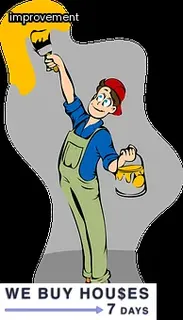
Ensuring healthy and livable homes can be costly, especially if you're a homeowner in need of home repairs. Fortunately, there are financial aid options available in Minnesota to help with the costs associated with such repairs.
Grants and loans are available from various entities including local governments, nonprofit organizations, and even private lenders. These grants and loans can provide homeowners with much needed assistance for essential home repairs like roofing, siding, windows, plumbing, HVAC systems, electrical work and more.
The funds can also be used for energy-efficiency upgrades that may save money on heating or cooling costs over time. To find out if you qualify for financial aid for home repairs in Minnesota, contact your local government office or search online resources to learn more about the programs available to you as a homeowner.
When it comes to getting financial aid for home repairs in Minnesota, grants and loans are available to homeowners. However, it is important to recognize and remove asthma triggers, as this can help reduce the risk of an attack and related health risks.
Many common asthma triggers can be found in the home, such as dust mites, mold, pet dander, smoke, and pollen. To reduce exposure to these substances, it is important to keep the house clean by vacuuming regularly and using high-quality air filters.
It is also essential to ensure that all areas of the house are properly ventilated by opening windows or using exhaust fans when necessary. Additionally, if you have pets or smoke cigarettes indoors, make sure that these activities occur only in well-ventilated areas.
Finally, when doing home repairs in Minnesota make sure that any materials used do not contain asbestos or lead-based paint as they can be harmful if inhaled.

Poor indoor air quality can cause a variety of health risks for homeowners in Minnesota. Common issues include asthma, allergies, sinus congestion and headaches.
Long-term exposure to toxins from mold, asbestos, carbon monoxide, radon and lead paint can lead to more serious illnesses such as cancer or respiratory diseases. In addition to the physical dangers, poor indoor air quality can also have a negative impact on mental health due to the stress of dealing with an unhealthy home environment.
Fortunately, there are financial resources available to help Minnesota homeowners repair their homes and improve the air quality inside them. Grants and loans are available at the local, state and federal level to assist with expenses related to home repairs that will improve indoor air quality.
Homeowners should take advantage of these programs to reduce health risks associated with poor indoor air quality in their homes.
When it comes to home repairs, lead-based paint hazards can be a major issue. If you're looking for financial aid in Minnesota and you suspect your home may have lead-based paint, it is important to identify the warning signs.
Lead-based paint can be found on any painted surface that was created before 1978. A telltale sign of lead in the home is a chalky, dull or cracked surface.
Other common indicators include an odor of paint or a metallic taste when licking the surface. To ensure safety, always test surfaces that you believe may contain lead.
Once identified, you can take appropriate measures to mitigate the risk and get financial aid for home repairs in Minnesota such as grants and loans for homeowners.
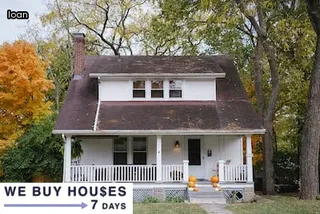
When tackling a home repair project, it is important to choose the right materials for the job. The materials used in your project can affect its overall cost as well as its long-term durability.
When selecting materials, consider factors such as budget, life expectancy, and availability of parts and replacements. For instance, if you are on a tight budget, opt for more affordable materials that still provide quality workmanship.
However, if you want to ensure your repairs last longer, look into more expensive but longer lasting options like stainless steel or hardwood flooring. Additionally, make sure the products you use are compatible with existing infrastructure; this will save you time and money down the road when it comes to getting financial aid for home repairs in Minnesota.
Finally, research local businesses that specialize in these products so you can access expert advice and get exactly what is best suited for your specific needs.
Qualifying for home repair assistance in Minnesota is easy to do, but there are certain requirements that must be met. Depending on the type of assistance you are interested in receiving, your eligibility may vary.
To qualify for financial aid for home repairs, you must be a homeowner in Minnesota and have a household income below a certain level as determined by state guidelines. Additionally, you must be able to demonstrate financial need and show proof of ownership of the property that requires repairs.
There may also be other specific qualifications related to the type of repair or project involved such as meeting energy efficiency requirements or having the necessary permits in place. To get started, it is recommended that applicants contact their local government agency or community action agency to learn more about available options and obtain an application.

When considering home repairs and upgrades, Minnesota homeowners may be eligible for financial aid in the form of grants or loans. Examples of eligible repairs can include roofing replacement or repair, siding repair, window replacement, energy-efficiency upgrades, new HVAC systems, plumbing repairs or electrical work.
Homeowners may be able to access support through a variety of sources. These can include government programs that provide grants and low-interest loans as well as private options such as bank financing or homeowner's insurance policies.
It is important to research all the available options to determine which one best meets the needs of your specific situation. Homeowners should also be aware that some programs are income-based and may require additional information before an application can be approved.
Applying for a Lead-Based Paint Grant can be a helpful way to get financial aid for home repairs in Minnesota. Homeowners in the state may be eligible to receive grants and loans that can help pay for lead-based paint removal and other renovations.
It is important to understand the qualifications and requirements of the program before applying. When applying, it is necessary to provide evidence of ownership, prove lead-based paint exists in the home, demonstrate financial need, and provide documentation that demonstrates how the funds will be used.
In some cases, homeowners may have to take a HUD approved course or participate in an evaluation process before being approved for funding. Furthermore, some local programs offer additional resources like loan counseling services or other assistance related to repaying the loan.
Homeowners should research all available grants and loans before deciding which one is best for their needs.
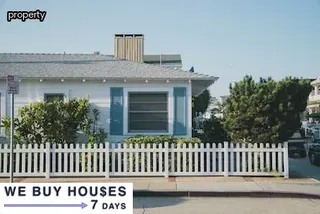
When it comes to home repairs, the cost can be high. Fortunately, there are options available in Minnesota to help you get financial aid for the repairs you need.
Eligibility criteria can vary depending on your income and other factors. To qualify for grants and loans, homeowners must meet certain requirements.
Generally speaking, you must be a resident of Minnesota, own and occupy the home in need of repair, have a low to moderate income, not have any delinquent taxes or liens on the property and have an up-to-date homeowner’s insurance policy. It’s important to note that these requirements may vary depending on the type of loan or grant received.
Additionally, some grants may require applicants to participate in related programs such as energy efficiency courses or weatherization assistance projects. It is essential that homeowners thoroughly research their options in order to determine eligibility requirements and ensure they are obtaining all available information before submitting a grant or loan application.
When seeking financial assistance with home repairs in Minnesota, homeowners should begin by researching the contact information of various organizations providing grants and loans. Many of these organizations are located within Minnesota or have offices in the state, and most are dedicated to helping individuals maintain their homes.
One such organization is the Minnesota Housing Finance Agency (MHFA), which offers a variety of loan options for those looking to make necessary repairs to their homes. Additionally, the Minnesota Department of Human Services provides a list of resources for homeowners in need of financial assistance for home repairs.
This list includes local government agencies, nonprofit organizations and other groups that may be able to provide grants or loans for home repair expenses. Homeowners can also contact their local county human services agency or community action agency to find out what types of aid they may qualify for.
It is important to remember that not all types of aid will be applicable in every situation, so it is best to reach out directly to each organization with questions about eligibility requirements and application processes.
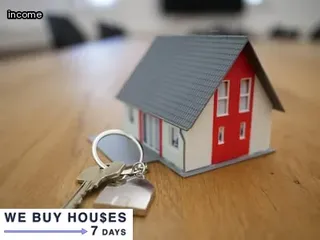
Minnesota homeowners who need to make repairs to their home may be able to obtain financial assistance through grants and loans. Homeowners who are looking for funds for home renovations should research the different types of programs available.
Grants, for example, do not need to be repaid and can be used for repairs such as roofing, electrical work, plumbing and more. In addition to grants, there are also loan options that provide funding at a lower interest rate than traditional lenders.
It is important to review the terms of any loan carefully before signing an agreement so that you understand all of your obligations. Additionally, some local organizations may offer additional resources such as volunteer labor or materials discounts for qualifying homeowners in Minnesota.
With these options in mind, it is possible to secure the funds necessary for making home repairs and renovations in a cost-effective manner.
If you're a homeowner in Minnesota looking for financial aid to help with home repairs, understanding income requirements for grants and loans is key. Depending on the type of financial aid you're seeking, there are generally two sources of income that may be considered: earned income and unearned income.
Earned income typically includes wages from employment, self-employment earnings, or alimony payments. Unearned income usually consists of Social Security benefits, pensions, annuities, child support payments, investments and other similar sources.
To qualify for most grants or loans, applicants must meet specific income criteria established by the program they apply to; these criteria will vary depending on the program and will also take into account your household size. Some programs may have maximum or minimum income limits that you must meet in order to be eligible; others may require additional documentation such as tax returns or bank statements.
Be sure to check all requirements before applying for any grant or loan program to ensure that you meet the necessary qualifications and understand what documents need to be submitted with your application.

Making energy efficiency improvements to your home is a great way to save money in the long run. Not only can it lower your energy bills, but it can also increase the value of your home.
In Minnesota, there are several resources available to homeowners who need help making these improvements or who are facing foreclosure. Financial aid for home repairs may be available through grants, loans, and other programs.
To get started on applying for aid, you must first determine what type of assistance you need and research the different programs that may be available. Next, you should contact your local government office or housing authority to learn more about what options are available in your area.
After that, you can apply for any programs that fit your needs and submit all the necessary documents to receive financial assistance. It is important to remember that the process can take some time before you receive a decision on whether or not you qualify for aid.
The Minneapolis Home Grant is a financial aid program designed to help low-income homeowners in Minnesota make repairs and improvements to their homes. The grant is funded by the City of Minneapolis, and it provides up to $15,000 for eligible projects.
Projects must meet certain requirements, including energy efficiency and safety standards. Homeowners can apply for the grant through the City of Minneapolis website or at their local housing authority.
To qualify for the grant, applicants must meet certain income requirements and demonstrate that they are unable to pay for repairs on their own. Additionally, recipients must agree to use a qualified contractor to perform the work.
The funds provided by the Minneapolis Home Grant can be used towards a variety of home improvement projects such as roofing, siding, electrical upgrades, and window replacements. This program offers low-interest loans as well as grants that do not need to be repaid.
It is an excellent option for those looking for financial assistance with home repairs in Minnesota.
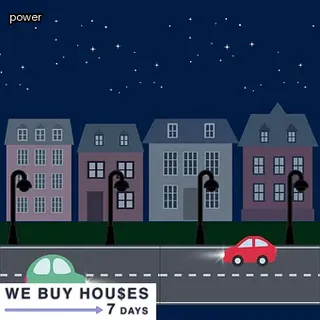
Low income seniors in Minnesota have a variety of programs available to them to help with home repairs. The Minnesota Housing Finance Agency offers loan and grant options for those who qualify.
The Rehabilitation Deferred Loan Program is designed for low-income seniors and provides loans up to $30,000 at 0% interest rate for qualified home repairs. The Emergency Homeowner Loan Program provides zero-percent interest loans of up to $25,000 over a five-year period, while the Home Improvement Loan Program offers fixed-rate financing of up to $50,000 with terms ranging from five to twenty years.
Additionally, the Low Income Homeownership Assistance Program provides grants up to $15,000 for low income seniors needing assistance with home repairs. Seniors should also check with their local county or city government offices or non-profit organizations as additional sources of financial aid may be available.
Home improvements are expensive, so it’s important to know what grants and loans are available for homeowners in Ireland. The Irish Government offers a range of grants and loans for home repairs, improvements, and renovations.
These include the Home Renovation Incentive (HRI), the Heat Saving Measures Scheme (HSMS) and the Warmer Homes Scheme (WHS). The HRI grant provides tax relief on approved renovation works, while HSMS provides grant funding for insulation and heating upgrades.
WHS is a free grant scheme providing insulation, heating upgrades, and ventilation systems to vulnerable households. Other grants available include the Department of Housing's Home Energy Conservation Grant (HECG) which helps low-income households with energy costs; the Rural Regeneration & Development Fund which supports rural development projects; and Local Authority housing initiatives such as the Rebuilding Ireland Home Loan which offers low-interest loans to first-time buyers.
To find out more about financial aid options for home repairs in Ireland, contact your local authority or visit their website.
The city of Detroit has recently launched a new program that provides financial assistance to homeowners in need of home repairs. The Home Repair Program offers grants and loans for qualified applicants who are looking to make essential repairs or upgrades to their homes.
The program is open to all residents of Detroit, regardless of income level or other factors. Applicants can use the funds for major projects such as roofing, heating and cooling, plumbing and electrical work, as well as smaller projects such as painting, window replacement and installation of energy efficient appliances.
The program is funded by the City of Detroit, private donations, and other local sources. Homeowners may also be eligible for additional state funding through Minnesota's Housing Finance Agency or other local organizations.
To apply for the Home Repair Program or learn more about the qualifications and application process, please contact the City of Detroit directly.
A: The Minnesota Housing Finance Agency provides information on approved mortgage lenders and programs in the state. You can visit their website or contact them directly to learn more about available options for financing repairs to your home.
A: When considering solar power for your Minnesota home, the primary properties to consider are the size and orientation of your roof, the amount of available sunlight, local weather patterns and temperatures, and the cost of installation. Solar energy can be a great way to reduce energy costs in Minnesota.
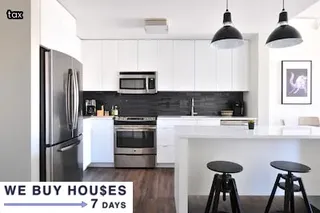
A: To access assistance from HUD, you will first need to determine if you qualify for a loan or other credit program offered by the United States government. You can contact your local HUD office to find out more information about what programs are available in your state and how to apply for them.
A: You may qualify for a low interest loan through the U.S. Department of Housing and Urban Development (HUD). HUD offers assistance programs to help Americans repair, maintain, and improve their homes. The program provides loans with competitive interest rates to those who qualify. You can find more information about this program at www.hud.gov/americadream or by contacting your local HUD office in Minnesota.
A: Installing Solar PV or Photovoltaic panels in a Minnesota home can provide numerous benefits, including reducing energy costs, increasing energy independence, and providing long-term financial savings on electricity bills. Additionally, installing solar power can increase the value of your home and help protect the environment by reducing emissions from fossil fuels.

A: Yes, the U.S. Department of Housing and Urban Development (HUD) offers a range of programs and services specifically designed to help people with disabilities access housing assistance, including loans and grants to help with home repairs or renovations. In addition, many local lenders offer programs that allow disabled individuals to apply for mortgage loans with more favorable terms than traditional creditors.
A: Yes! The U.S. Department of Housing and Urban Development (HUD) offers several programs specifically designed to assist elderly, senior citizens, veterans and Habitat for Humanity members with home repair costs in Minnesota. These include loans, grants, and other forms of financial assistance to help eligible individuals make necessary repairs to their homes.
A: Rebuilding Together is a national non-profit organization that provides free home repairs to low-income families. They can provide assistance with electrical repairs, such as installing new wiring and outlets, upgrading the existing electrical panel, and replacing or repairing smoke detectors to ensure safety and health standards are met.
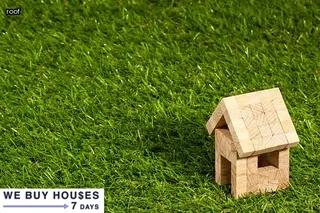
A: Yes, there are multiple grants and loans that can help you finance the repairs and improvements to your home in Minnesota. The U.S. Department of Housing and Urban Development (HUD) offers several grants and loan programs to help with home repair, such as the Title I Property Improvement Loan Program and the Home Investment Partnerships Program (HOME). Additionally, some states like Minnesota offer additional grants and loan programs that can be used for home repair.
A: When making house repairs in Minnesota with children or people with accessibility needs, it is important to consider potential safety and health hazards such as lead-based paint, asbestos, radon, carbon monoxide, mold and mildew. Additionally, it is important to ensure that any electrical systems are up to code and all necessary repairs or renovations comply with local building codes.
A: You should have a licensed HVAC contractor inspect your furnace and HVAC units annually to ensure they are operating safely and efficiently. The contractor can also help with any repairs or maintenance needed.
A: There are several programs that may be able to help you fix your home in Minnesota, including the Minnesota Housing Finance Agency, USDA Rural Development, Habitat for Humanity, and the FHA Title I Home Improvement Loan Program.